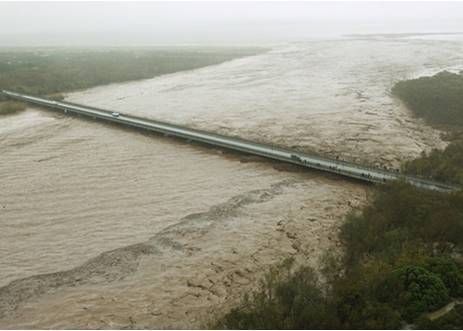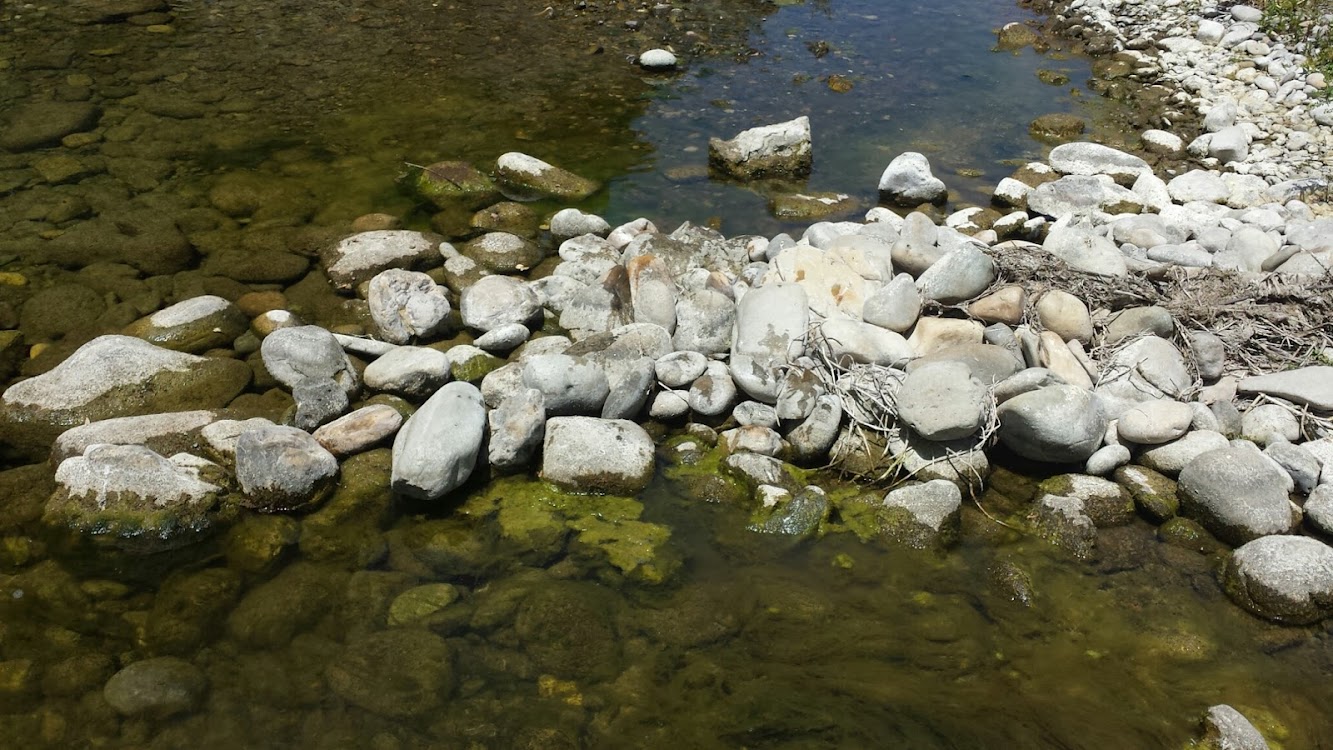Above is a picture of water in southern California. Look closely because it is going away... Now what you are looking at is one of the main channels leading to the dozens of acres of man made ponds that recharge the aquifer on the Oxnard plain. The water is diverted from the Santa Clara River at this specific spot because of the congruence of the river leaving a wide valley and maximum percolation utility for the aquifer. Why is recharging the aquifer so important? Because growing strawberries in a semidesert. And because agriculture is taking out more than is being put back naturally. And because strawberries do not grow on salt water. And salt water intrusion occurs in places like Oxnard when freshwater groundwater reserves are tapped so long and hard that salt water creeps in. And it takes about 40 gallons of freshwater to combat 1 gallon of saltwater. Despite all these measures, it is quite possible that the water situation in Ventura county will be handed over to the feds through a process known as adjudication. Because we could not handle our resources responsibly the adults will have to step in.
What should be immediately apparent to you is that the Saticoy settling ponds as they are affectionately known are mainly dry. These ponds should be full this time of year doing their job recharging the aquifer. But nothing.
Depressed yet? I do not want to get you on a complete downer but it gets worse. Although the pools create habitat for numerous birds and there are some fish (non native for the most part), reptiles, and amphibians that use the ponds - what you should notice is that all emergent vegetation is completely scoured away. No willows, tules, cattails - all plants that would thrive in such an environment and provide crucial habitat - are scoured away to prevent clogging of the gravity fed system of pipes, berms, and levees.
Now the word mitigation gets used a lot when discussing the complex matter of nature being steamrolled by human wants and interests. It usually goes something like this (to paraphrase) "We are going to do so much damage to the system, I mean just completely disrupt things that for a little pity party we will do this little token of appreciation over here for you (insert park, nature center etc etc)."
Well how about this for mitigation? Let the settling ponds re-vegetate and naturalize a bit, providing habitat for wildlife. It might take a little bit of extra work keeping the culvert clear, minimizing disruption and what not. But why can't it be done? Perhaps these extra costs could themselves be mitigated by allowing fishermen and bird watchers onto the property for a nominal fee? Kayaking anybody?
My point is this: the Vern-Freeman diversion though it provides a necessary service to the agricultural economy of this region can not escape the burden of proof that it, like all man-made water diversions/dams, has imposed a huge burden on the evolutionary, geological, and ecological processes of the Santa Clara river watershed. Is United Water doing all that it can in its power to mitigate these damages?
Well as I pointed out above I do not think so, but in all fairness as my last post addressed they are doing much more than they have in the past by taking a pro-active approach to fish passage, designing a new fish ladder, getting a cool fish camera etc etc.
And finally, this being a beaver blog after all, what is the connection to beaver? You should know that the Sespe River is the primary tributary of the Santa Clara River- providing about 40% of the flow into the river. And if you are up to date on your beaver studies in socal you should also know that a primary piece of data used in the Lanman et al paper on historic range of beaver in California was a beaver collected in 1906 on the Sespe prior to statewide translocations of beaver. Beaver are native to this watershed. While some parts of the Santa Clara do become dry sandy washes unsuitable for beaver other parts such as the diversion and upriver in Santa Paula contains some flows year round. Beaver could live here. Take a look at the video below on how the channel is maintained to see the habitat here for them.
And take a look slightly upriver in the city of Santa Paula. You will notice good flow, abundant riparian vegetation, and where some diversions have created some faux beaver ponds already.
And check out the habitat on the Santa Paula Creek, a tributary nearby:
 |
| Santa Paula Creek |
One specific issue at the diversion was the issue of high sediment load in the water. Before going into the Saticoy ponds the water is shunted through a series of settling ponds where the sediment is allowed to drop out of the water so as not to gunk up the pipes.
One word of encouragement. According to Steve Howard, senior fisheries biologist at Freeman, they decided not to trap out the badgers who have begun colonizing the dry settling ponds. Even though their aggressive digging could destabilize earthen berms they opted to utilize the mustelids as rodent control for a booming ground squirrel population. Maybe if United Water decides to take a "let nature do the job" attitude towards badgers there is hope for beavers and United Water collaborating in the future? Perhaps as a collaborative partner in groundwater recharge?
"The arrogance of man is in thinking he is in control of nature and not the other way around."
Godzilla 2014
 |
| Dinosaur trap at Vern-Freeman (cowbird trap-nest parasite) |
















































